
Black History, Military
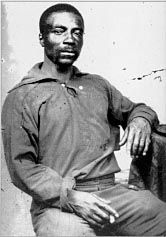
Civil War sailor George Commodore. (NARA, Records of the Veterans Administration, RG 15)
The Secretary of the Navy Authorized enlistment of slaves as Union sailors, September 25, 1861
The Union Navy began to employ African American men on board ships as crew members and sailors very early in the war. And as the war progressed, blockading squadrons and naval vessels also took on board numerous “contraband” slaves who managed to escape from land to sea.
By 1863, the Union navy was enlisting and actively recruiting runaway slaves as crewmembers or paid sailors, usually at the low rank of “landsman.” By the end of the war nearly 20,000 black sailors had enlisted, a figure which represented nearly 20 percent of the navy’s enlisted men. The majority of these black sailors were men who had been enslaved but seized naval service as a route to freedom. (more…)
Black History, Military
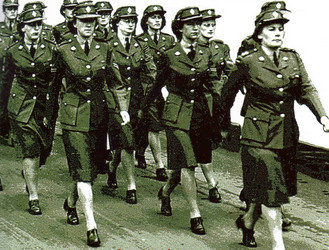 During World War II, Fort Des Moines served as a training center for the Women’s Army Corps.
During World War II, Fort Des Moines served as a training center for the Women’s Army Corps.
One of the accomplished graduates of that training course was Bernice Gaines Hughes, the first black woman to become a Lieutenant Colonel in the U.S. Armed Forces.
Black History, Military
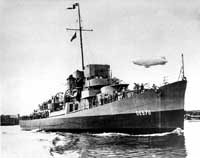
USS Harmon
First warship named for a black person, the SS Leonard Roy Harom, launched in Quincy Mass, 1943.
USS Harmon, a 1400-ton Buckley class destroyer escort, was built at Quincy, Massachusetts. Commissioned in August 1943, she conducted her shakedown in the western Atlantic and was then assigned to the southwest Pacific area for escort duties with the Third and Seventh Fleets. As war fronts moved northward, Harmon participated in the January 1945 landings at Lingayen Gulf, Leyte. In March, she operated off Iwo Jima.
Beginning in mid-1945, in preparation for further invasion services, Harmon was modified to increase her gun firepower. World War II ended while this work was being done, and, upon completion of the overhaul, the ship was assigned to training duties in the Pacific and the Atlantic. Decommissioned in March 1947, Harmon remained inactive until she was sold for scrapping in January 1967.
USS Harmon was named in honor of Mess Attendant First Class Leonard Roy Harmon, a hero of the Naval Battle of Guadalcanal.
Black History, Government, Military
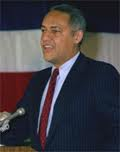
Cliffors Alexander Jr. first African American Secretary of the Army
Clifford Alexander Jr. was born and raised in Harlem prior to his education at Fieldstone Ethical Culture, Harvard (1955) and Yale Law School (1958). Early influences were his mother and father. Edith served as the Deputy Director then Executive Director of the Mayor’s Committee on Unity under NYC Mayor LaGuardia. The Mayor’s Committee on Unity was the precursor to the NYC Commission on Human Rights and fought discrimination in employment practices, public accommodations, and housing.
His father was one of several Harlem community leaders who founded the Carver Bank in response to discriminatory lending practices and worked to integrate the Riverton Apartments while serving as its manager. Alexander joined the National Guard after Law School and began working as an attorney in New York. He was asked to come to Washington D.C. in 1963 to join the staff of the National Security Council in the Kennedy administration. (more…)
![Anna Ella Carroll]()
Black History, Literature, Military
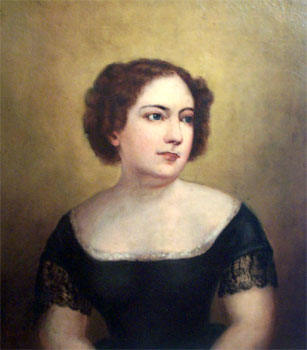
Anna Ella Carroll
More than a century following her death, after being ignored, oppressed, and–literally–erased from history, Anna Ella Carroll is finally getting the last word. Carroll was an intriguing and atypical 19th century woman who emerged from the male-dominated realm of war, politics, and diplomacy.
As a key military strategist, Presidential advisor, and “unofficial” member of Abraham Lincoln’s Cabinet, Carroll was probably the most powerful woman in American during the Civil War. Biographers note that she could “scheme, connive, and maneuver as well as any man.” (more…)
Black History, Military

Pinckney Benton Stewart Pinchback
(b. May 10, 1837, Macon, Ga., U.S.–d. Dec. 21, 1921, Washington, D.C.), freeborn black who was a Union officer in the American Civil War and a leader in Louisiana politics during Reconstruction (1865-77).
Pinchback was one of 10 children born to a white Mississippi planter and a former slave–whom the father had freed before the boy’s birth. When the father died in 1848, the family fled to Ohio, fearing that white relatives might attempt to re-enslave them.
Pinchback found work as a cabin boy on a canal boat and worked his way up to steward on the steamboats plying the Mississippi, Missouri, and Red rivers. After war broke out between the states in 1861, he ran the Confederate blockade on the Mississippi to reach Federal-held New Orleans; there he raised a company of black volunteers for the North, called the Corps d’Afrique. When he encountered racial discrimination in the service, however, he resigned his captain’s commission. (more…)


 During World War II, Fort Des Moines served as a training center for the Women’s Army Corps.
During World War II, Fort Des Moines served as a training center for the Women’s Army Corps.


